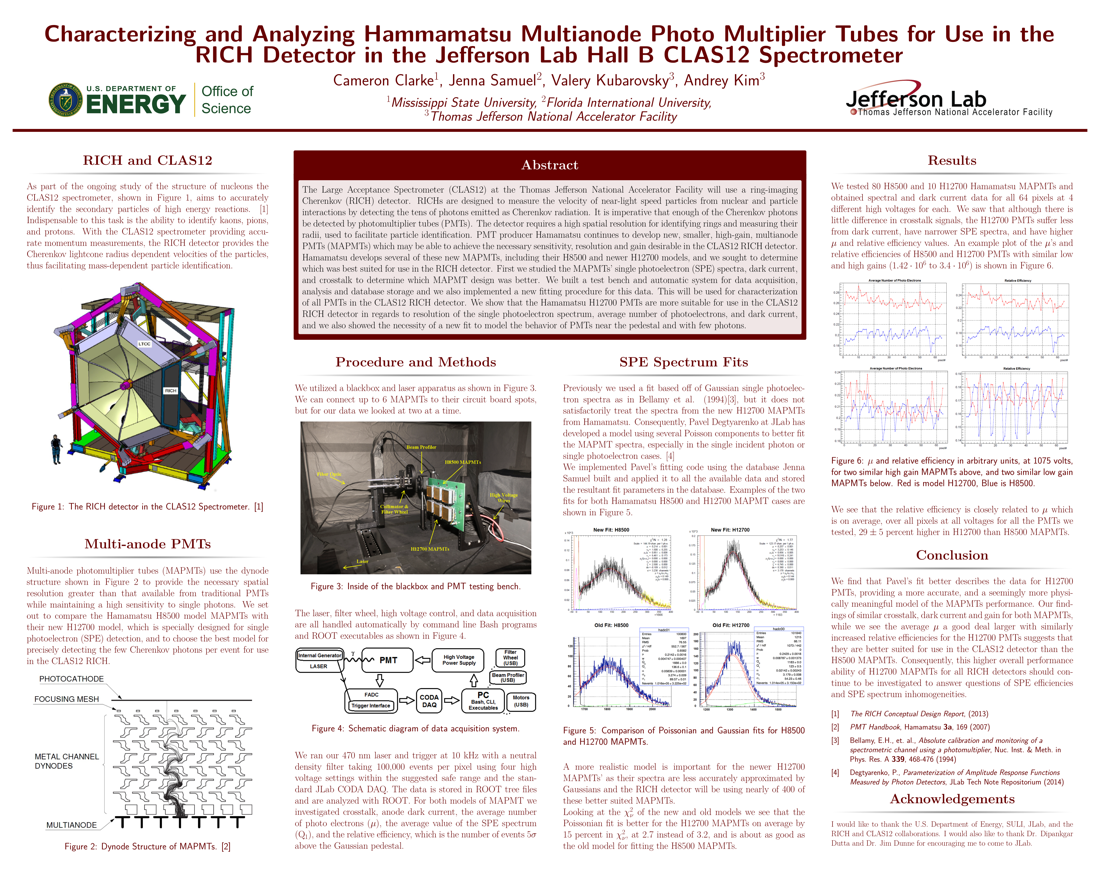Undergraduate Research at Jefferson Lab
Characterizing and Analyzing Hammamatsu Multianode Photomultiplier Tubes for Use in the RICH Detector in the Jefferson Lab Hall B CLAS12 Spectrometer
Student: Cameron Clarke
School: Mississippi State University
Mentored By: Valery Kubarovsky and Andrey Kim
The Large Acceptance Spectrometer (CLAS12) at the Thomas Jefferson National Accelerator Facility will use a ring-imaging Cherenkov (RICH) detector. RICHs are designed to measure the velocity of near-light speed particles from nuclear and particle interactions by detecting the tens of photons emitted as Cherenkov radiation. The detector requires a high spatial resolution for identifying rings and measuring their radii, used to facilitate particle identification. PMT producer Hamamatsu continues to develop new, smaller, high-gain, multianode PMTs (MAPMTs) which may be able to achieve the necessary sensitivity, resolution and gain desirable in the CLAS12 RICH detector. We sought to determine whether the Hamamatsu MAPMT H8500 or newer H12700 model was best suited for use in the RICH detector. First we studied the MAPMTs' single photoelectron (SPE) spectra, dark current, and crosstalk. We built a test bench and automatic system for data acquisition, analysis and database storage and implemented a new fitting procedure for this data. We show that the Hamamatsu H12700 PMTs are more suitable for use in the CLAS12 RICH detector and we also showed the necessity of a new fit to model the behavior of PMTs which are near the pedestal and with few photons. We saw that although there is little difference in dark current, the H12700 PMTs suffer less from crosstalk, have narrower SPE spectra, and have higher mu and relative efficiency values. We see that the relative efficiency is closely related to mu which is on average 29(5) percent higher in H12700 than H8500 MAPMTs. We find that the new fit better describes the data for H12700 PMTs. Consequently the H12700 MAPMTs will increase the efficiency of the RICH detector and should prove useful across the field of Cherenkov ring measurements and particle identification.

Citation and linking information
For questions about this page, please contact Education Web Administrator.
